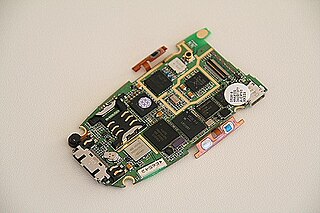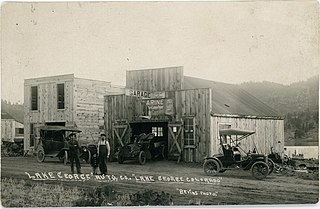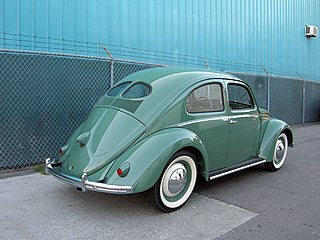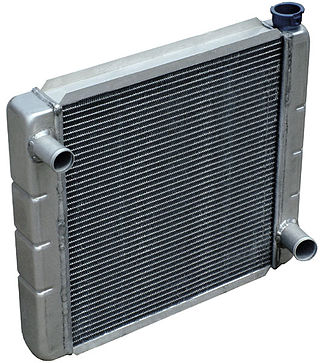A roof is the top covering of a building, including all materials and constructions necessary to support it on the walls of the building or on uprights, providing protection against rain, snow, sunlight, extremes of temperature, and wind. A roof is part of the building envelope.

Durability is the ability of a physical product to remain functional, without requiring excessive maintenance or repair, when faced with the challenges of normal operation over its design lifetime. There are several measures of durability in use, including years of life, hours of use, and number of operational cycles. In economics, goods with a long usable life are referred to as durable goods.
In economics and industrial design, planned obsolescence is the concept of policies planning or designing a product with an artificially limited useful life or a purposely frail design, so that it becomes obsolete after a certain predetermined period of time upon which it decrementally functions or suddenly ceases to function, or might be perceived as unfashionable. The rationale behind this strategy is to generate long-term sales volume by reducing the time between repeat purchases. It is the deliberate shortening of the lifespan of a product to force people to purchase functional replacements.

A product's service life is its period of use in service. Several related terms describe more precisely a product's life, from the point of manufacture, storage, and distribution, and eventual use. Service life has been defined as "a product's total life in use from the point of sale to the point of discard" and distinguished from replacement life, "the period after which the initial purchaser returns to the shop for a replacement". Determining a product's expected service life as part of business policy involves using tools and calculations from maintainability and reliability analysis. Service life represents a commitment made by the item's manufacturer and is usually specified as a median. It is the time that any manufactured item can be expected to be "serviceable" or supported by its manufacturer.
Internal combustion engine cooling uses either air or liquid to remove the waste heat from an internal combustion engine. For small or special purpose engines, cooling using air from the atmosphere makes for a lightweight and relatively simple system. Watercraft can use water directly from the surrounding environment to cool their engines. For water-cooled engines on aircraft and surface vehicles, waste heat is transferred from a closed loop of water pumped through the engine to the surrounding atmosphere by a radiator.
An extended warranty, sometimes called a service agreement, a service contract, or a maintenance agreement, is a prolonged warranty offered to consumers in addition to the standard warranty on new items. The extended warranty may be offered by the warranty administrator, the retailer or the manufacturer. Extended warranties cost extra and for a percentage of the item's retail price. Some extended warranties that are purchased for multiple years state in writing that during the first year, the consumer must still deal with the manufacturer in the occurrence of malfunction. Thus, what is often promoted as a five-year extended guarantee, for example, is actually only a four-year guarantee.
In law, a warranty is an expressed or implied promise or assurance of some kind. The term's meaning varies across legal subjects. In property law, it refers to a covenant by the grantor of a deed. In insurance law, it refers to a promise by the purchaser of an insurance about the thing or person to be insured.
Consumables are goods that are intended to be consumed. People have, for example, always consumed food and water. Consumables are in contrast to durable goods. Disposable products are a particular, extreme case of consumables, because their end-of-life is reached after a single use.

The piano requires various forms of maintenance to produce its best sound. Maintenance is also important for the appearance of the piano.

In electronics, rework is the repair or refinish of a printed circuit board (PCB) assembly, usually involving desoldering and re-soldering of surface-mounted electronic components (SMD). Mass processing techniques are not applicable to single device repair or replacement, and specialized manual techniques by expert personnel using appropriate equipment are required to replace defective components; area array packages such as ball grid array (BGA) devices particularly require expertise and appropriate tools. A hot air gun or hot air station is used to heat devices and melt solder, and specialised tools are used to pick up and position often tiny components. A rework station is a place to do this work—the tools and supplies for this work, typically on a workbench. Other kinds of rework require other tools.
Sleepsacks are a type of bondage (BDSM) gear. Sleepsacks are primarily used to confine a person comfortably for an extended period of time. Similar to a conventional sleeping bag, a person climbs into a sleepsack and is usually zipped into it up to their neck. Generally sleepsacks are very tight on the body, much like mummification, which adds to the total encasement aspect of the experience.

Brake linings are the consumable surfaces in brake systems, such as drum brakes and disc brakes used in transport vehicles.

An asphalt shingle is a type of wall or roof shingle that uses asphalt for waterproofing. It is one of the most widely used roofing covers in North America because it has a relatively inexpensive up-front cost and is fairly simple to install.

An automobile repair shop is an establishment where automobiles are repaired by auto mechanics and technicians. The customer interface is typically a service advisor, traditionally called a service writer.

In Henningsen v. Bloomfield Motors, Inc., 32 N.J. 358, 161 A.2d 69, the New Jersey Supreme Court held that an automobile manufacturer's attempt to use an express warranty that disclaimed an implied warranty of merchantability was invalid.

Conservation and restoration of road vehicles is the process of restoring a vehicle back to its original working condition. Vehicles, whether partially scrapped or completely totaled, are typically restored to maintain their roadworthiness or to preserve those with antique status for use as showpieces.

Radiators are heat exchangers used for cooling internal combustion engines, mainly in automobiles but also in piston-engined aircraft, railway locomotives, motorcycles, stationary generating plants or any similar use of such an engine.
Eight dimensions of quality were delineated by David A. Garvin, formerly C. Roland Christensen Professor of Business Administration at Harvard Business School, and may be used at a strategic level to analyze product quality characteristics. Garvin, who died on 30 April 2017, was posthumously honored with the prestigious award for 'Outstanding Contribution to the Case Method' on 4 March 2018.
Right to repair is a legal right for owners of devices and equipment to freely modify and repair products such as automobiles, electronics, and farm equipment. Right to repair may also refer to the social movement of citizens putting pressure on their governments to enact laws protecting a right to repair.










